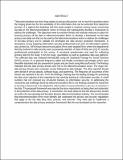A Framework for Enterprise Resource Planning Implementation Based on Key Success Factors in Kenya: A Case of Kenya Insurance Sector Organizations.

View/
Date
2018-09Author
Njoroge, John Lewis
Type
ThesisLanguage
enMetadata
Show full item recordAbstract
This thesis aimed to presents a framework for Enterprise Resource Planning system implementation among the Kenyan Insurance Industry, it reviewed the Critical Success Factors and analysis the relationships between success factors and indicators. The Critical Success Factors used in the research were chosen from literature review. In this study a conceptual framework was developed focusing on the Critical Success Factors are classified into four categories namely: Technology, Organization, Environment and cultures. To address the study objectives, a survey questionnaire was considered to be the most appropriate research method. Descriptive statistic method was applied to the analyzed data collected by interviewing the employees within the following organization levels: staff at management level, IT staff and users involved in the development and use of the Enterprise Resource Planning system. From the findings, lack of composition of the correct project team and failure support of the top management would highly influence the success of Enterprise Resource Planning systems implementation in insurance companies in Kenya. The study also established that the most effective means of capping these challenges would be to ensure the project was led by the right team, users involved in the Enterprise Resource Planning systems implementation should have a cross functional understanding of the organization, and the top executive lead by the Chief Executive Officer to support the project and should be seen supporting the project fully. The study recommends aligning the Cultural attributes such as dedicating project resources which include employees fully into project, the organizational attributes also need to be consider such as whether to change organizational processes to fit the Enterprise Resource Planning or whether to customize, in additional to this, consideration of Environment pressures and IT structures need to be considered for the success of the project.
Publisher
KeMU
Description
A thesis submitted in partial fulfillment for requirement for the conferment of the degree of Master of Science in Computer Information Systems of Kenya Methodist University
